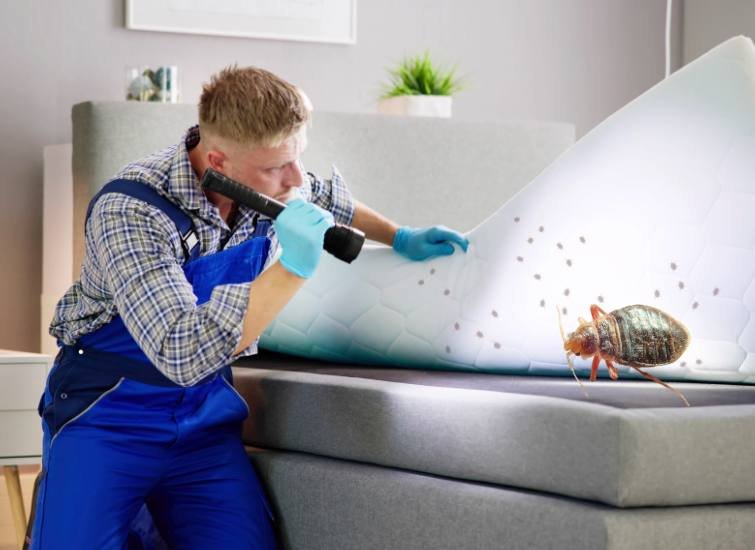Checking for bed bugs is crucial to ensure a healthy and pest-free living environment. This guide provides detailed steps to effectively identify and manage these elusive pests.
Understanding the Importance of Bed Bug Detection
Bed bugs are small, elusive pests known for inhabiting bedrooms and living areas. Recognizing their presence early is vital for effective control and eradication. This article outlines key strategies for identifying bed bugs, signs of infestation, and methods for prevention and control.
What Are Bed Bugs?
Bed bugs (Cimex lectularius) are tiny, nocturnal insects feeding on human blood. They are reddish-brown, wingless, and can be seen with the naked eye. Understanding their appearance and habits is crucial for early detection and control.
Initial Signs of Bed Bug Infestation
Physical Evidence of Bed Bugs
- Bites on Skin: Small, red, itchy welts on your skin, often in a line or cluster.
- Blood Stains: Rust-colored blood spots on bedding or mattresses.
- Fecal Marks: Small, dark spots on bedding or walls.
- Eggshells and Shed Skins: Tiny, pale yellow skins or shells in bed bug hiding places.
Common Hiding Places
Bed bugs typically hide in:
- Mattresses and Box Springs: Check seams, tags, and small crevices.
- Bed Frames and Headboards: Examine joints and cracks.
- Furniture: Sofas, chairs, and other upholstered furniture.
- Walls and Carpets: Behind wallpapers, baseboards, and carpet edges.
- Electrical Outlets and Appliances: Small gaps around outlets and appliances.
Step-by-Step Guide to Checking for Bed Bugs
Preparing for Inspection
- Gather Tools: A flashlight, magnifying glass, and gloves.
- Clear the Area: Remove clutter to reduce hiding spots.
Detailed Inspection Process
- Strip the Bed: Remove all bedding and inspect it thoroughly.
- Examine the Mattress and Box Spring: Pay special attention to seams and tags.
- Check Bed Frames and Headboards: Look for live bed bugs, eggs, and fecal spots.
- Inspect Other Furniture: Sofas, chairs, and nightstands.
- Look Around the Room: Inspect curtains, carpets, and wall hangings.
What to Do If You Find Bed Bugs
- Do Not Panic: Stay calm and avoid spreading bed bugs to other areas.
- Contact a Professional: Consider hiring a pest control expert.
- Start Treatment: Use recommended methods like heat treatment, pesticides, or encasements.
Prevention and Control Strategies
Preventive Measures
- Regular Cleaning: Vacuum regularly and reduce clutter.
- Protective Covers: Use bed bug-proof mattress and pillow covers.
- Travel Precautions: Inspect hotel rooms and keep luggage off the floor.
Control and Eradication
- Chemical Treatments: Use approved insecticides carefully.
- Non-Chemical Methods: Consider heat treatments, steam cleaning, or freezing.
- Professional Assistance: Seek help from licensed pest control professionals.
Conclusion: Staying Vigilant Against Bed Bugs
Regular checks and preventive measures are key to avoiding bed bug infestations. By following the steps outlined in this guide, you can effectively detect and manage bed bug problems.
FAQs: Additional Insights on Bed Bug Detection
How often should I check for bed bugs?
Regular inspections every few months, or immediately if you suspect an infestation.
Can bed bugs spread diseases?
Bed bugs are not known to spread diseases, but their bites can cause discomfort and allergic reactions.
What are the first steps after detecting bed bugs?
Isolate the affected area, clean all bedding and clothes, and consider professional pest control services.


